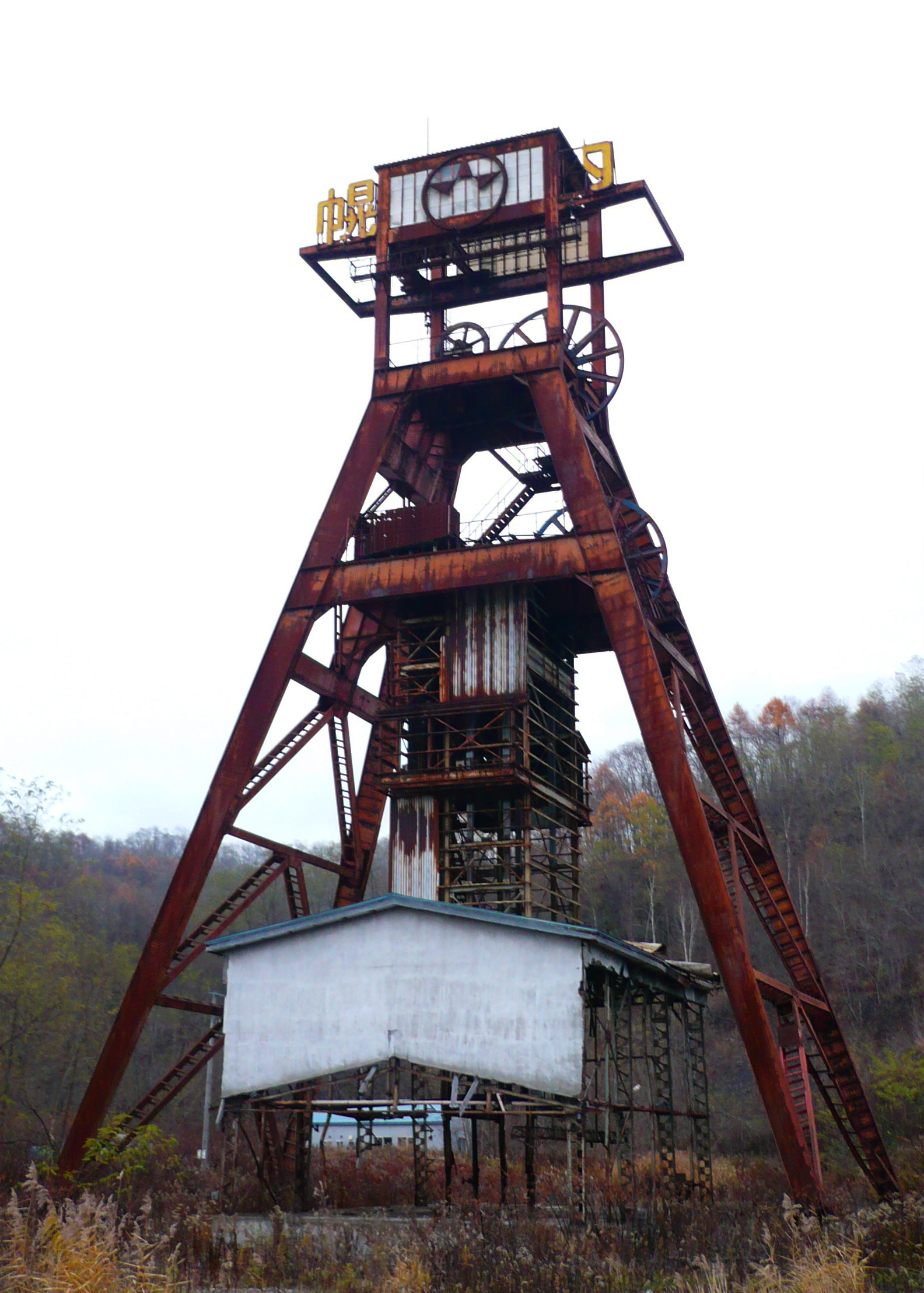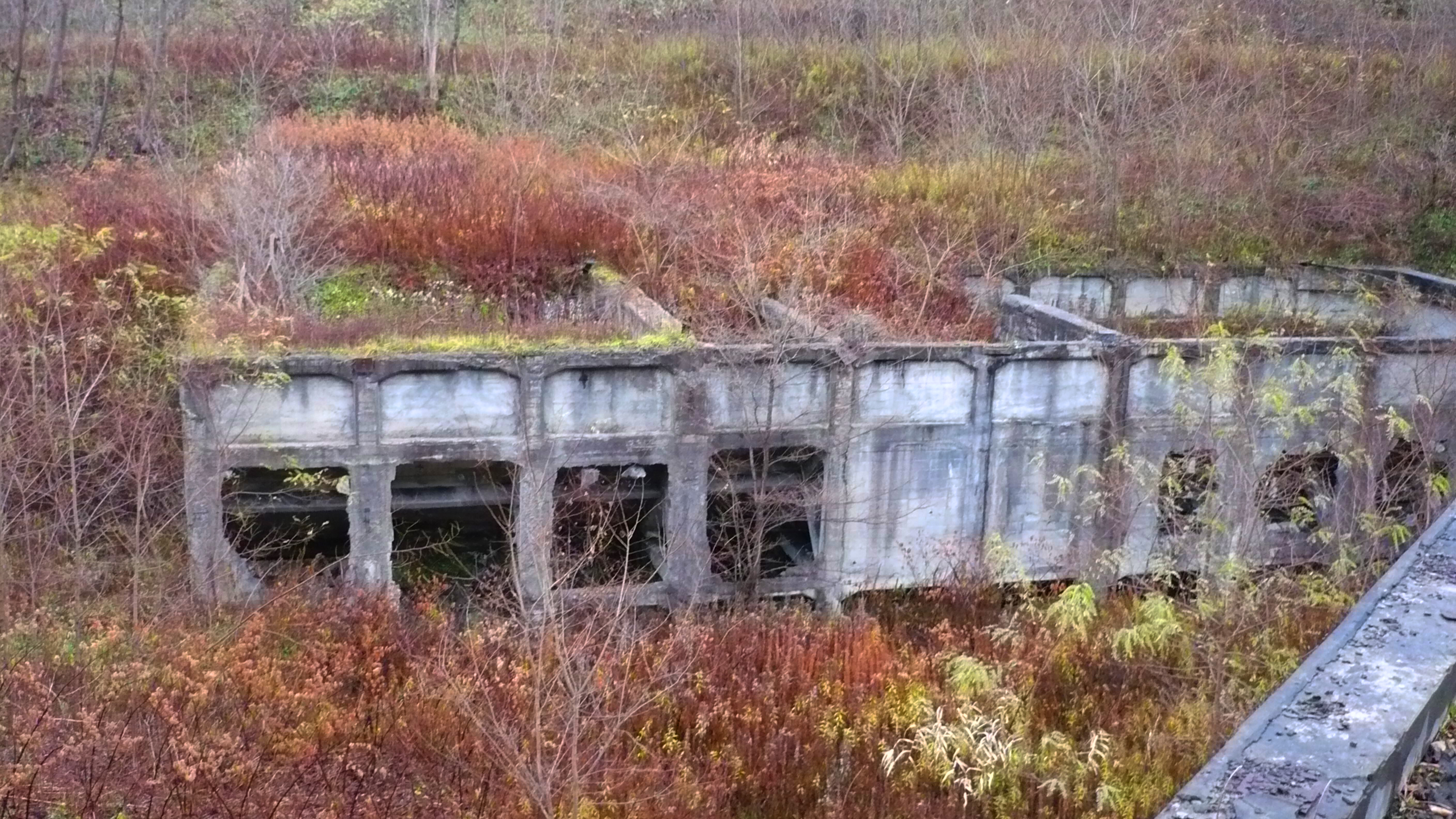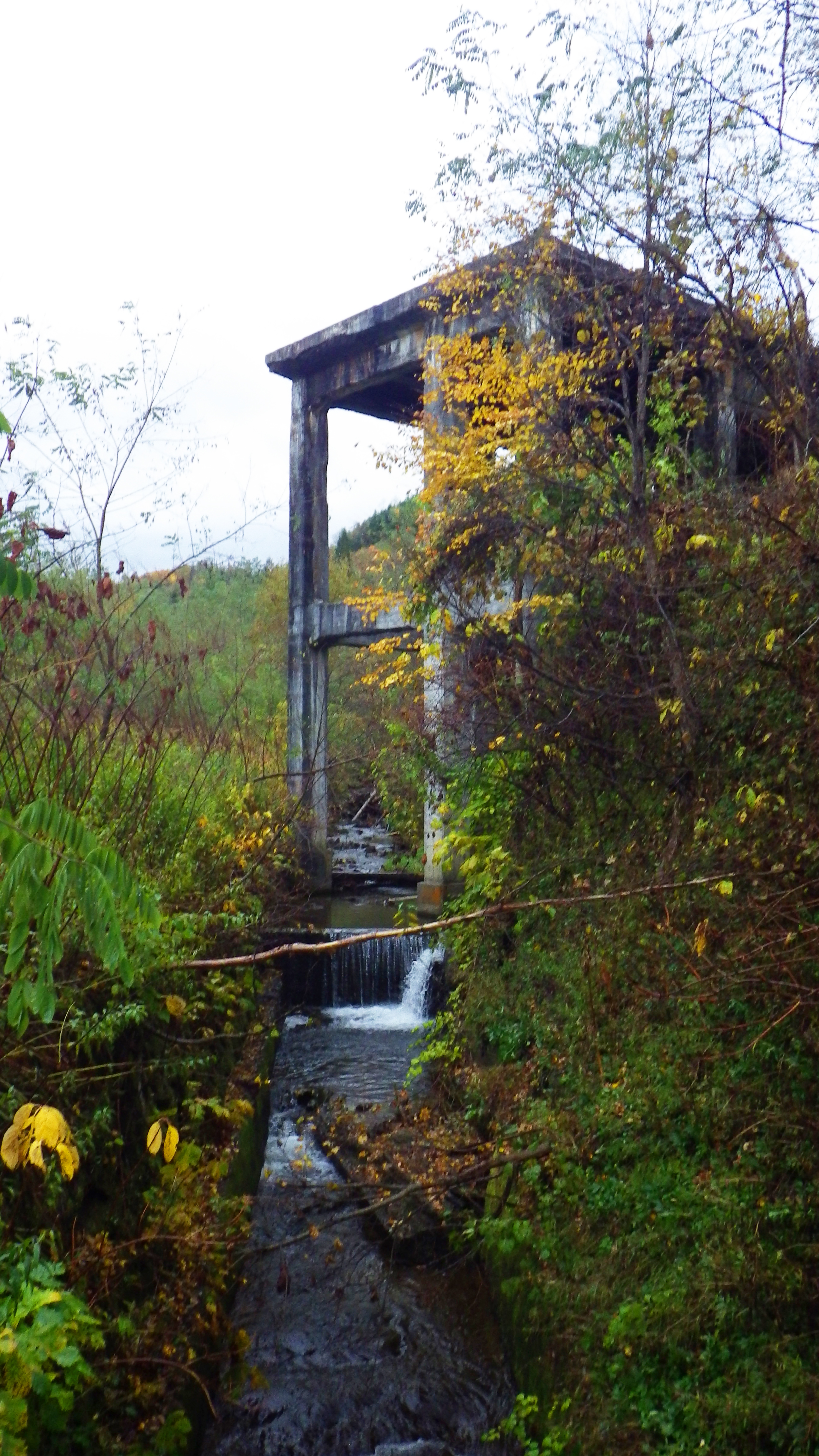Hokutan Horonai coal mine on:
[Wikipedia]
[Google]
[Amazon]





 The is the oldest mine of the Ishikari coalfield of the Sorachi ( Mikasa) mining region on the
The is the oldest mine of the Ishikari coalfield of the Sorachi ( Mikasa) mining region on the
Transfer and Development of Coal-Mine Technology in Hokkaido
pp. 11-20. The construction of the mine was led by the American engineer L.C.E. Goujot and his disciple Edward Parry. The first adit, the Daikōdō (大抗道, big adit) was opened in 1879. It was followed by the opening of the Takinosawa adit (瀧ノ沢抗) and Honsawa adit (本沢抗) in 1882, which meant the start of the coal production. In the year 1882, the railway of Horonai was completed (官営幌内鉄道, Kan'ei Horonai Tetsudō), the third railway of the Japanese empire connecting the mine with the


Japan
Japan ( ja, 日本, or , and formally , ''Nihonkoku'') is an island country in East Asia. It is situated in the northwest Pacific Ocean, and is bordered on the west by the Sea of Japan, while extending from the Sea of Okhotsk in the n ...
ese island of Hokkaido
is Japan, Japan's Japanese archipelago, second largest island and comprises the largest and northernmost Prefectures of Japan, prefecture, making up its own List of regions of Japan, region. The Tsugaru Strait separates Hokkaidō from Honshu; th ...
. Since its privatisation in 1889, the mine came under the management of the Hokutan company until its closure in 1989.
The Startup
In 1868, carpenter Kimura Kichitarō (木村 吉太郎) discovered coal in Horonai, Mikasa (三 笠). However, it took another 6 years before Chōjūrō Hayakawa a citizen of Sapporo, delivered the first coal to the colonization commission (開拓使, Kaitakushi). The local government took action, and the mining engineersBenjamin Smith Lyman
Benjamin Smith Lyman (11 December 1835 – 30 August 1920) was an American mining engineer, surveyor, and an amateur linguist and anthropologist.
Biography
Benjamin Smith Lyman was born in Northampton, Massachusetts. He graduated from Harvard Uni ...
and Takeaki Enomoto welded an investigation. Their findings were satisfactory, and the Meiji government decided to build in Horonai the first coal mine of the Ishikari coal basin.Kasuga YutakaTransfer and Development of Coal-Mine Technology in Hokkaido
pp. 11-20. The construction of the mine was led by the American engineer L.C.E. Goujot and his disciple Edward Parry. The first adit, the Daikōdō (大抗道, big adit) was opened in 1879. It was followed by the opening of the Takinosawa adit (瀧ノ沢抗) and Honsawa adit (本沢抗) in 1882, which meant the start of the coal production. In the year 1882, the railway of Horonai was completed (官営幌内鉄道, Kan'ei Horonai Tetsudō), the third railway of the Japanese empire connecting the mine with the
Otaru
is a city and port in Shiribeshi Subprefecture, Hokkaido, Japan, northwest of Sapporo. The city faces Ishikari Bay and the Sea of Japan, and has long served as the main port of the bay. With its many historical buildings, Otaru is a popular to ...
harbor. Also, the government decided to build the prison of sorachi in Mikasa (空知監獄). Thus the problem of overcrowded prisons as well as the problem of insufficient labour power in the mine were solved. Between 1883 and 1894, this prison provided an average of 720 prison miners a year, making up 80 percent of the total workforce.
Privatisation
In 1889, the Meiji government sold off the mine and its railways to, Hori Motoi, who founded theHokkaido Colliery and Railway Company was a company engaged in coal mining, railway operation and shipping in Hokkaidō, Japan.
The company was established in 1889 when the state-owned and Horonai Railway were sold to the company. The company developed coal mines and transported ...
(北海道炭礦鉄道会社 Hokkaidō Tankō Tetsudō Kaisha), abbreviated as Hokutan. Due to the tensions with Russia, Japan nationalised its railways again in 1906, and the company name changed into the Hokkaidō Coal and Steamship Company. In 1913, after disappointing investments in its steel plant, in Muroran
is a city and port located in Iburi Subprefecture, Hokkaido, Japan. It is the capital city of Iburi Subprefecture. As of February 29, 2012, the city has an estimated population of 93,716, with 47,868 households and a population density of . The ...
, the conglomerate Mitsui bought itself into the management of Hokutan.
Along with the property, Hokutan also bought the rights for prison labor, so the miners mostly consisted of prisoners. It continued until 1894, when the Meiji government under the pressure of the public opinion led by Protestant prison director Ōinoue Terusaki (1848-1912), decided on the abolition of prison labour. The prisoners were substituted by other forms of recruitment as that of subcontractors (飯場制度, ''hanbaseidō'') and direct recruitment as well as a thorough mechanization. In 1938, the Tokiwakō (常磐坑), two inclined shafts were mined. Along these the coal was transported towards the coal preparation plant. In 1952, these shafts were equipped with conveyor belts. When in 1967, the Horonai mine merged with the Shin-Horonai mine (新幌内炭鉱, ''shin Horonai tankō''), these belts transported coal from a depth of 520 meters, over a distance of 2.720 meters towards the plant. The merged Hokutan Horonai mine was equipped with two modern deep shafts and used drum cutters since 1968, which made it one of the most modern mines of Japan.
Closure
In the 70's the Horonai mine faced several mine accidents, and thus became unprofitable. In November 1975, a gas explosion took 13 lives and caused an underground fire that had to be extinguished by pouring 4 billion liters of water into the mine. The extinguishing and subsequent repairs dragged on for two years and left the mine with a debt of 120 billion yen and on the verge of bankruptcy. As a final attempt, the parent company was in 1978 split into the departments of Horonai, Sorachi, Mayachi and Yubari. These subsidiaries were accumulating losses and the bank of the parent company,Mitsui
is one of the largest ''keiretsu'' in Japan and one of the largest corporate groups in the world.
The major companies of the group include Mitsui & Co. ( general trading company), Sumitomo Mitsui Banking Corporation, Nippon Paper Industries ...
, was no longer willing to cover these losses. Again, on November 27, 1977, another deadly gas explosion with more than 15 victims occurred in Horonai, and its financial situation worsened. As a result, the local government had to buy up its properties, such as the mining community and its facilities, in order to finance its closure.Yoshioka Hirotaka, Interviewed by Tom Arents.
Adaptive Reuse
Due to its difficult financial situation Hokutan could not even clean up its own properties. Ultimately, only the steel structures (excluding the Horonai shaft) have been erased, but the concrete structures remained standing in the landscape. The city of Mikasa built a railway museum on the access road to the mining site. However, this museum could not replace the income from the mining activities, and the city balanced on the verge of bankruptcy. These events forced the regional government of Sorachi to adjust its regeneration policy. So it proclaimed in 1998 the "Law for the Examination of Mining Heritage," (炭鉱の記憶調査事業, ''Tankō no Kioku Chōsa Jigyō'') which supported the enhancement of regional material and immaterial heritage. In response to it, professor Hirotaka Yoshioka (吉岡宏高) promoted the valorisation of the mining heritage of Mikasa by organizing heritage walks at the site of the mine Horonai, which resulted in the establishment of the landscape park of the coal mine Horonai (幌内炭鉱景観公園, ''Horonai Tankō Keikan Kōen'').Yoshioka Hirotaka, Tankō isan de machizukuri, pp.79-80.References